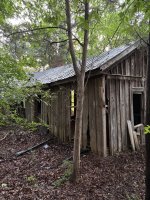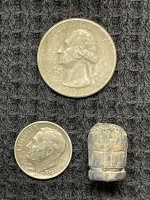rgb1
Sr. Member
- Nov 24, 2013
- 295
- 769
- Detector(s) used
- 2 whites 1 garett
- Primary Interest:
- All Treasure Hunting
these are depressions found in various areas of ky. usually they will contain small pieces of charcoal and bits of metal in bottom this is how it works when you have various types of ores sulfides , hydroxides , carbonates , or oxides they must be roasted to drive off sulfides or oxygen when sulfides are present they must roasted in open air when the others are roasted they must be in an oxygen free invirement so they dug a hole they made shelves placed logs at different levels this alloyed them to achieve either process depending what type ore was available when carbonates , oxides , or hydroxides were roasted the ores were below ground level sulfides were above in open air oxides , carbonates , and hydroxides require carbonic acid to convert to the metalic state after this is achieved the heat is increased by bellows to melting temps. this in turn runs into bottom of hole it is then claimed after fire is quenched and sent to smelt.
Last edited:






